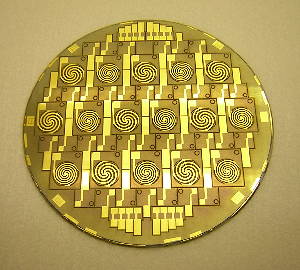UK technology will help to manufacture micro-scale devices
Researchers at Cranfield University in the UK have developed a technology that could slash the cost of manufacturing complex micro-mechanical and micro-optical devices. The project, part of a €3.2m EU-supported research consortium called Q2M (Quality to Micro), has examined some of the key issues with existing micro-fabrication processes, which are limited by the conflicting requirements of different materials.
“Standard micro-fabrication techniques are often incompatible with high-quality transducer materials such as shape memory alloys and functional ceramics,” explains Stephen Wilson, a senior research fellow in microsystems technology at Cranfield. “This is one of the major bottlenecks for the development of novel micro-scale systems.
“The new technology enables multi-material devices to be made that do not conform to the usual silicon MEMS stereotype,” he continues. “It will bring down the cost of genuinely new systems considerably.”
The new methods could be used to manufacture items ranging in size from a few hundred nanometres to a few millimetres. Potential applications include: biomedical devices that can diagnose disease and administer drugs electronically; electronic noses to sniff out explosives or dangerous chemicals; and environmental control systems for personal healthcare. The technology could also open up new applications in communications because it allows previously incompatible non-silicon materials to be incorporated in radio-frequency circuits.

The image (above) shows 16 piezoelectric micro-valve components on a 50mm-diameter wafer. The valves, which are just 100 microns thick – twice as thick as a human hair – can change their shape when an electrical signal is applied.
The three-year Q2M project involved 12 academic partners and industrial companies, as well as several end-users to ensure the work addressed real industrial needs.





